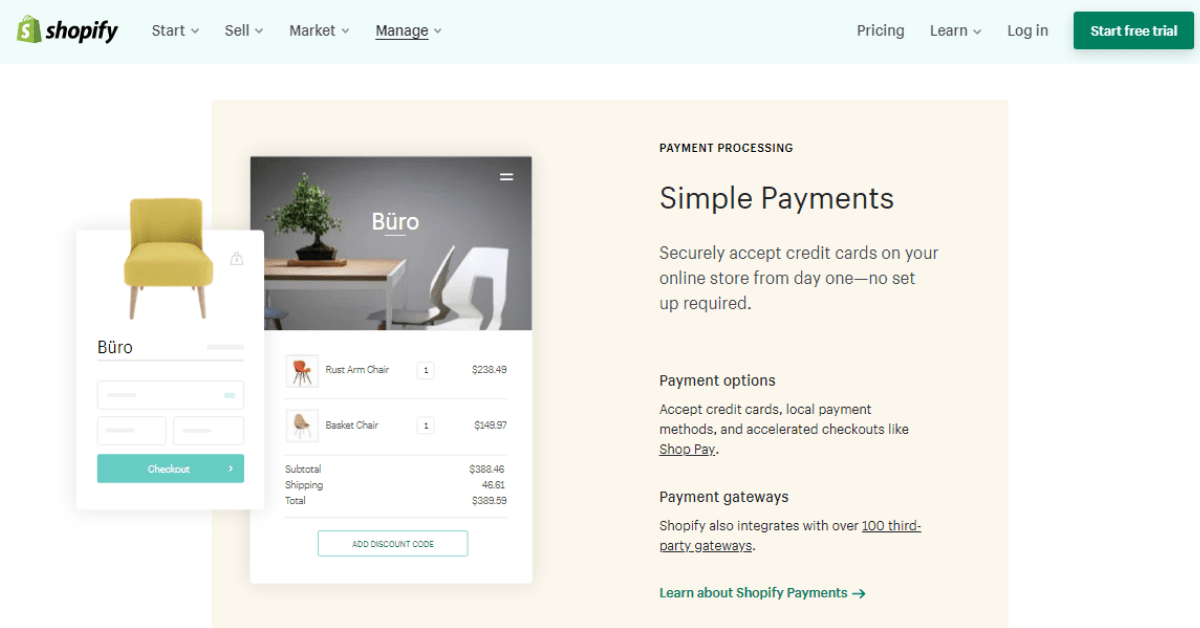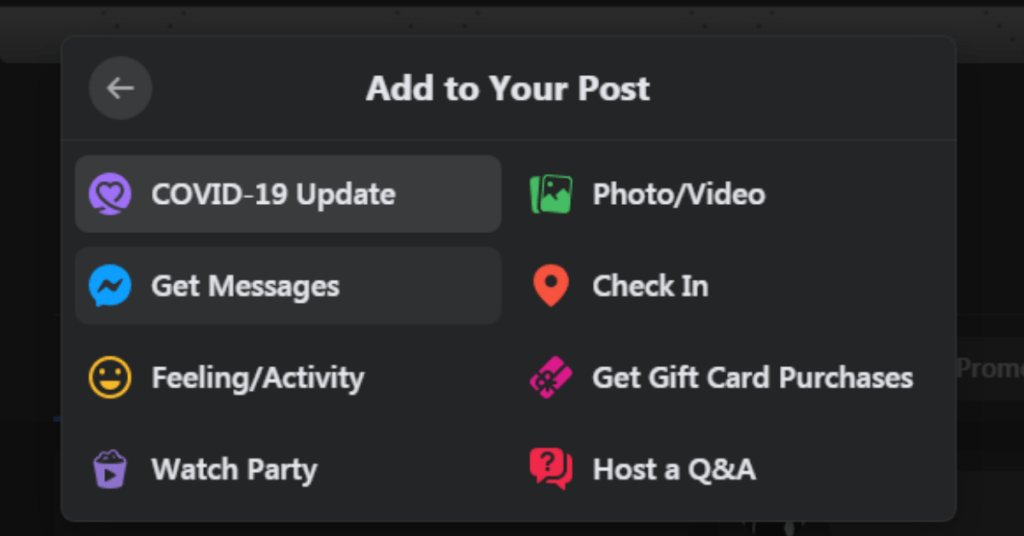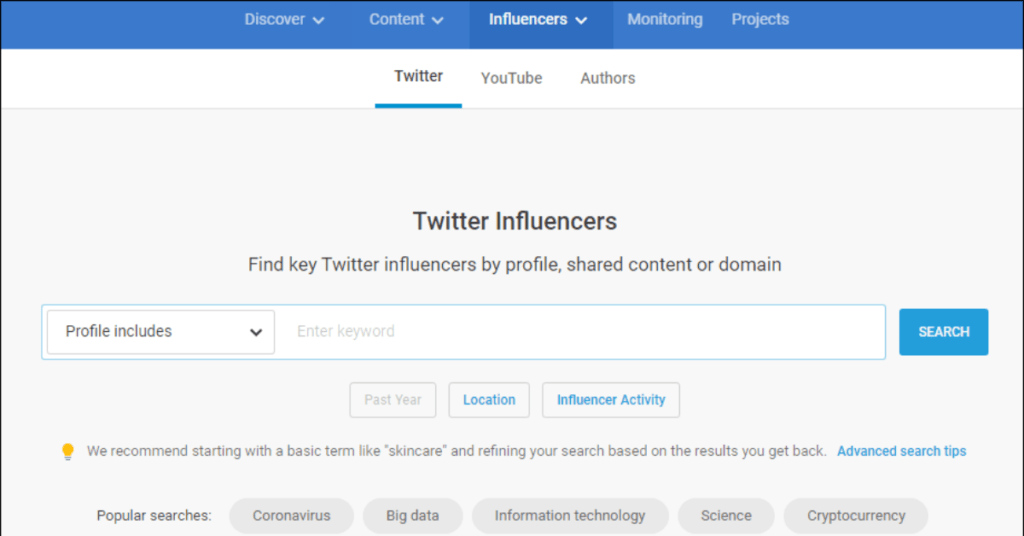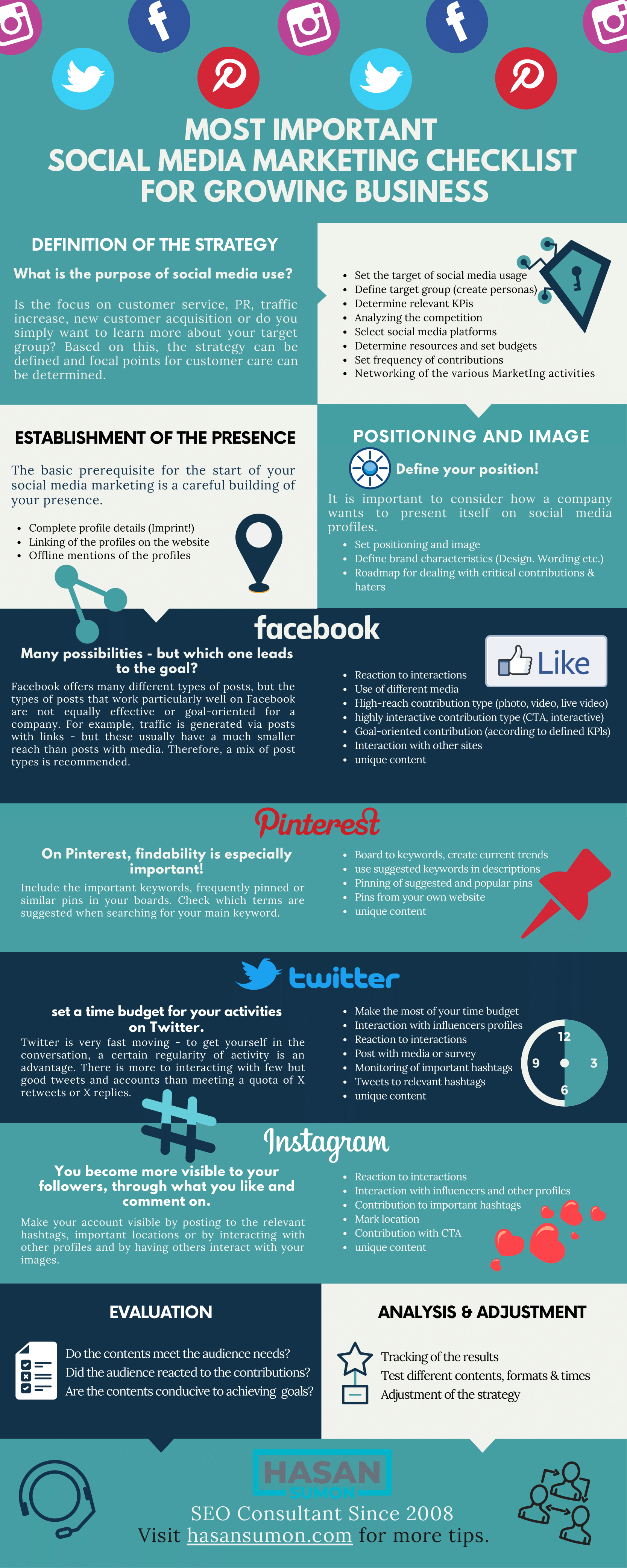Every social media has unique characteristics. A checklist helps to keep track of the most important points in any business. My social media marketing checklist will give you a great start to structure all your social media activities!
Checklists are not a magic bullet, they are more suitable for checking whether the basic work steps have been completed. My checklist should give you an overview of the strategic direction and the content you need to create. But before we go, you need to
Frequency of posts: The frequency with which you should post differs from company to company, which is why generalizing information in the checklists is often not appropriate or means unnecessary work. First, define your social media marketing strategy – you can use this to determine the frequency of the posts.
Timing of the work steps: How often and when certain work steps should be completed depends on the activity of the fan base, the marketing team, and the strategy. There are several tools like Buffer and Hootsuite, you can use to analyze when and how often your target group is active. With the help of this information, the available time budget, you can plan your tasks.
Strategic approach: Meaningless comments on any page bring the wrong visitors to your page. Set a certain amount of time that you take to search for suitable pages and to comment on suitable posts. This way you can reach people who are really interested in your site.

The Social Media Marketing Checklist
There are already countless social media checklists circulating on the internet and some of them are really good – I have nevertheless created my own checklist: This checklist is mainly about which criteria should be met.
Definition Of The Strategy
- Define the goal of social media use: For what purpose should the social media channels be used? On the basis of the defined goals, the rough priorities for the maintenance of the networks can be determined. Is the focus on customer service, image cultivation, traffic increase, new customer acquisition or do you just want to find out more about your target group?
- Define the target group (create personas): age, gender, interests, place of residence, education, living situation, etc.

- Define relevant KPIs: What are the most important indicators for you? Traffic, reach, interactions, fan numbers, etc.
- Analyze competition: on which platforms is the competition represented? What and how often do you post? What feedback do you get from the fans?
- Select social media platforms: Select the social media channels that will best achieve your goals.
- Determine resources and set budgets: How much time can you invest in looking after the social media channels? Who can create what content?
- Define the frequency of posts: How often should you post?
- Networking of the various marketing activities: Social media marketing should not stand on its own – link both your online and offline marketing activities with it.
Positioning And Image
- Define positioning and image: It is important to define how a company would like to present itself on the social media profiles: For example, whether the company appears more as an entertainer, consultant or expert on the social media profiles?
- Define brand features (design, wording, etc.): A uniform design and address has a professional effect and increases recognition value.
- Timetable for dealing with critical posts & haters: An impulse reaction to a negative post can damage the image – a set timetable makes it much easier to respond appropriately in critical situations.
Establishing The Presence
- Complete profile information: The profile information is important not only for the sake of completeness but also for legal reasons. (Imprint!)
- Linking the profiles on the website: The most exciting social media presence is of little use if it is not found.
- Offline mentions of the profiles: mentions in information brochures, in conversations or at events are very helpful when setting up the profiles, especially at the beginning.
Content
- Strategic planning of the content: determine the format, order and timing of the content. You will receive the necessary information for this with analysis tools like buffer or Buzzsumo.

- Posting cross-media: By linking and sharing, your different profiles can benefit from each other.
So that it is interesting to follow your social media profiles, you should create unique content for all channels that can only be found there. Of course, such content is much more time-consuming to create – nevertheless try to keep the proportion of this unique content as high as possible. To provide variety, you can also adapt existing content for the respective platform, for example with a different image or an individual teaser text.
- Reaction to interactions: Respond promptly to messages and comments, even a like is a nice gesture when someone shares a contribution from you.
- Use of different media: Different media offer the fans variety and also achieve different average reach and interaction rates.

- Broadcast type of post: Images, videos and live videos typically achieve particularly high reach.
- Highly interactive type of post: CTA or interactive options (e.g. coordination between two variants) encourage users to interact with the post, which in turn increases the reach.
- Targeting contribution (according to established KPIs): The types of contributions with high reach or many interactions are not necessarily the type of contributions that support your goals. Links typically have a much smaller range than images or videos, but bring traffic to the website.
- Interaction with other pages: To become better known, you can tag other pages, comment on posts and share them.
- Unique content: Offer entertaining added value through special content such as offers, background information or internal insights.
Hardly any other platform offers as many different post types as Facebook. However, the types of post that work particularly well on Facebook are not equally effective or target-oriented for a company. Therefore, a mix of post types is recommended.
- Create a board for searched keywords or current trends: So that your boards and pins appear in the suggestions.
- Use suggested keywords in the descriptions of the pins and boards: Increases the chance of being found in the search.

- Pin suggested and popular pins on custom boards: To appear in the suggestions (it shows which boards a picture was pinned to).
- Pin pictures from your own website: To direct Pinterest users to your website.
- Unique content: Offer interesting, a creative added value that links to your website. The graphic processing of the content is important!
Findability is particularly important on Pinterest – that’s why you should include the important keywords and frequently pinned or similar pins in your boards.
- Maximize your time budget: Be regularly active – set a time budget for your activities on Twitter.
- Regular interaction with influencers and other profiles: To take part in public conversations and increase your reach.
- React promptly to interactions with your own tweets: Twitter is very fast-moving – users, therefore, expect a quick reaction. With timely answers, you can develop a conversation and thus maintain the interests of the users.
- Share a post with the media or poll: This stimulates interaction with your tweets.
- Monitoring of important hashtags: This allows you to discover relevant conversations and get involved.
- Tweets on relevant hashtags: To be seen by the target group and to increase reach.
- Unique content: Offer exciting added value that stimulates discussions.

There are different ways to get involved in the conversation. Since Twitter is very fast-paced, a certain regularity is an advantage here.
- Interaction with influencers and other profiles: To reach your target group and increase your reach.
- Reaction to interactions with your posts: This will strengthen the bond with your target group.
- Contribution to important hashtags: To be seen by your target group and to increase the reach.
- Mark the location when you share a post: this is how other users in the area can find your post.
- Create a post with CTA: This allows you to promote interactions with your post, which in turn increases your reach.
- Unique content: Offer visually attractive/positive added value – since the images are “hearted”, your followers should be able to agree to the post.

You become more visible to your followers, not through what you post, but also through what you like and comment on. Make your account visible through contributions to your relevant hashtags, important locations or through interactions with other profiles or through interactions of others with your pictures. Your pictures should have a positive tenor so that it is easy for your followers to like a picture.
Of course, it would be great if any account met all the criteria – in practice, however, they cannot always be the case. In order not to pursue one-sided social media marketing, it is therefore very helpful to check these checkpoints regularly. How often you go through this checklist depends on the frequency of the posts: For example, if you post something on Twitter twice a week, you should work through this checklist on a monthly basis – if you post something daily, you should work through this checklist on a weekly basis.
Evaluation:
- Does the content meet the needs of the target group?
- Did the posts trigger the expected reactions?
- Is the content used conducive to achieving the set goals?
Analysis and Adjustments
- Tracking the results: Use tracking options (Google Analytics, Facebook Pixel) and analysis tools to check your results. You should always keep an eye on your set goals and adjust your strategy if necessary.
- Tests of different content, post types, times: This way you can get to know your target group even better and prepare your content optimally.
- Analysis of the results and adaptation of the strategy: Use the various information to continuously adapt and improve your strategy.
Now See It All As Infographic:










